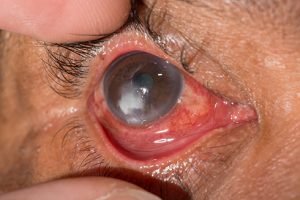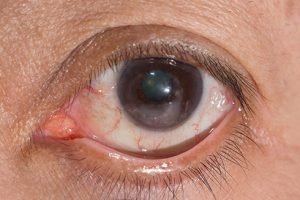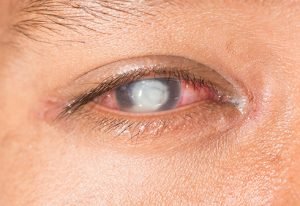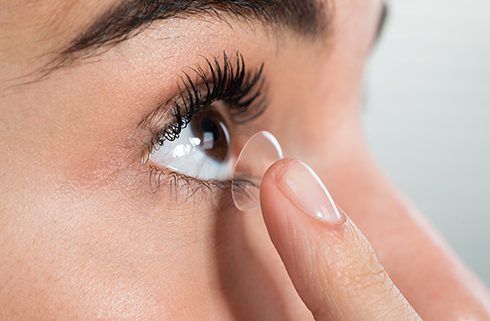6 Risks of Long-Term Contact Lenses Use
Contact lenses are medical devices worn directly on the corneas of the eyes for vision correction or aesthetics purposes. Although useful, they can put the eyes at risk of infections and inflammation, especially when used for an extended period of time. This is because the lenses cover the entire corneas, reducing the amount of oxygen that reaches the eyes from the environment.
Several risks of prolonged wearing of contact lenses include:

1. Dry Eye Syndrome
Dry eye syndrome (keratoconjunctivitis sicca) is caused by insufficient or poor quality tears. Its symptoms include burning or stinging sensation, sandy or gritty feeling, sore eyes, light sensitivity, blurry vision; and eye itchiness, tiredness, dryness, and redness. Inadequate supply of oxygen reduces the tears produced by the eyes so if you have borderline dry eye syndrome, you may feel especially uncomfortable with your contacts on. If you wear contacts for too long, the protein deposits also build-up, which can make your eyes feel even drier.

2. Pink Eye
Bacterial infection from contact lenses can lead to pink eye (conjunctivitis), an inflammation or swelling of the conjunctiva. Symptoms of conjunctivitis include pink discoloration to the whites of eyes, swollen eyelids, itching or burning sensation, discharge or excessive tearing, and increased sensitivity to light.
 3. Corneal Ulcer
3. Corneal Ulcer
Corneal ulcer (microbial keratitis) results from the rubbing of contact lenses against the eyes’ surface, creating open sores in the outer layer of the corneas that may enable bacteria to penetrate the eyes. Corneal ulcer causes pain and redness, mild to severe eye discharge, and blurry vision.
4. Corneal Scarring
Corneal scars develop when contact lens cause abrasions or injury to the Bowman’s membrane (smooth and nonregenerating layer between the superficial epithelium and the stroma) and the stromal layers. Scar can also form when the corneal ulcer penetrates the Bowman’s and the stromal layer. Corneal scarring can lead to impaired vision.

5. Vision Loss
Corneal ulcer scarring can lead to permanent vision loss, especially if the ulcer is centrally located in the cornea and is deep and invasive. Vision loss after corneal ulcer occurred more frequently with extended-wear soft contact lenses compared with extended-wear silicone hydrogel contact lenses.

6. Abnormal blood vessel growth
Wearing contact lenses for too many hours or too many years can cause abnormal blood vessel growth in the cornea (corneal neovascularization). Blood vessels normally circle the cornea at the limbus or the border of the cornea and the sclera (white part of the eye). Any growth beyond this point hampers your vision.
Risks of prolonged contact lenses use differ for each person. If you decide to use them, always keep them clean and stored properly, follow your lens-wearing schedules, and set appointments with your eye doctor for follow-up care. Also, make sure to have an up-to-date pair of eyeglasses to give your eyes a break.
For permanent and long-term solution to vision problems, consider getting LASIK (laser-assisted in situ keratomileusis), which is the most advanced type of vision correction that uses laser energy to reshape the cornea and correct refractive errors, such as nearsightedness, farsightedness, and astigmatism.
Shinagawa Lasik Center provides safe, fast, painless, and bladeless LASIK procedures. For more information or appointment schedule, visit Shinagawa PH.





How much po und treatment?
How much will it cost for a lasik operation for 700 grade eye? Thanks.
I’m interested in Lasik how much does it cost? I already emailed you before but no reply at all. Please let me know thank you!